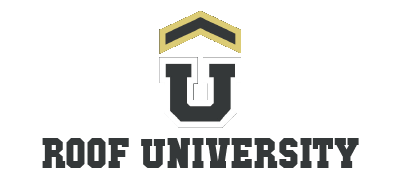Shingle products can be discontinued by manufacturers for various reasons, from changes in market demand to advancements in materials and technology. If your roof is covered with discontinued shingles, it’s essential to understand how this might affect repairs, replacements, and insurance claims.
What Are Discontinued Shingle Products?
Discontinued shingles are roofing materials that are no longer manufactured or sold by their producers. This means they are no longer available for purchase, making it challenging to find exact replacements for repairs or extensions of an existing roof.
Why Do Shingle Products Get Discontinued?
- Advancements in Technology:
- Newer, more durable, or energy-efficient materials replace older designs.
- Market Demand:
- Low sales volumes can lead manufacturers to phase out certain styles or colors.
- Cost Considerations:
- Rising production costs may make certain shingle types less profitable to produce.
- Product Defects or Failures:
- Shingles with consistent performance issues or high failure rates may be discontinued.
- Environmental Regulations:
- Changes in environmental policies may render some materials or manufacturing processes non-compliant.
Challenges of Discontinued Shingles
- Limited Repair Options:
- Finding an exact match for discontinued shingles is difficult, and mismatched repairs can affect the roof’s appearance and resale value.
- Warranty Complications:
- Manufacturer warranties may no longer be honored if the product is discontinued, depending on the terms of the warranty.
- Insurance Issues:
- Insurance companies may limit coverage if repairs cannot use matching materials, especially for cosmetic damage claims.
- Replacement Costs:
- Full roof replacement may be required if matching shingles are unavailable, which can be costly.
What to Do If Your Shingles Are Discontinued
- Identify the Manufacturer and Model:
- Check for markings or documentation to determine the brand and style of your shingles.
- Search for Remaining Stock:
- Contact roofing supply stores or distributors to see if they have leftover stock of the discontinued product.
- Consider Salvaged Materials:
- Some roofing professionals or suppliers specialize in locating and reusing salvaged shingles.
- Explore Alternative Repairs:
- Work with a roofing contractor to find complementary materials for repairs or discuss options like re-roofing over the existing shingles.
- File an Insurance Claim:
- If damage requires replacement, check if your policy includes provisions for non-matching materials or a full roof replacement.
Insurance Considerations
- Matching Coverage:
- Some insurance policies include matching coverage, which may pay for a full roof replacement if matching shingles are unavailable.
- Cosmetic Damage Clauses:
- Policies vary on whether they cover cosmetic mismatches resulting from discontinued products.
- Document Everything:
- Keep detailed records of the shingle’s model, manufacturer, and any warranties to support insurance claims.
Proactive Steps for Homeowners
- Regular Inspections:
- Catch damage early to minimize the need for extensive repairs or replacements.
- Stock Up on Extras:
- If possible, purchase extra shingles during the initial installation for future repairs.
- Consider a Full Replacement:
- If your shingles are nearing the end of their lifespan or a large section is damaged, replacing the entire roof may be more cost-effective.
- Choose Long-Term Solutions:
- When re-roofing, select products from reputable manufacturers with a history of product longevity and availability.
Popular Discontinued Shingle Products
- CertainTeed Horizon Shingles:
- Once a popular choice, now phased out due to market shifts.
- Tamko Slatestone:
- Discontinued in favor of more advanced architectural designs.
- Atlas Chalet Shingles:
- Discontinued due to widespread issues with durability.
Conclusion
Dealing with discontinued shingles can be challenging, but proactive steps and understanding your options can help mitigate issues. Whether through locating remaining stock, working with complementary materials, or exploring insurance coverage, homeowners can navigate the difficulties of maintaining a roof with discontinued shingles. For long-term peace of mind, planning ahead and investing in durable, widely available roofing products is always a wise choice.
